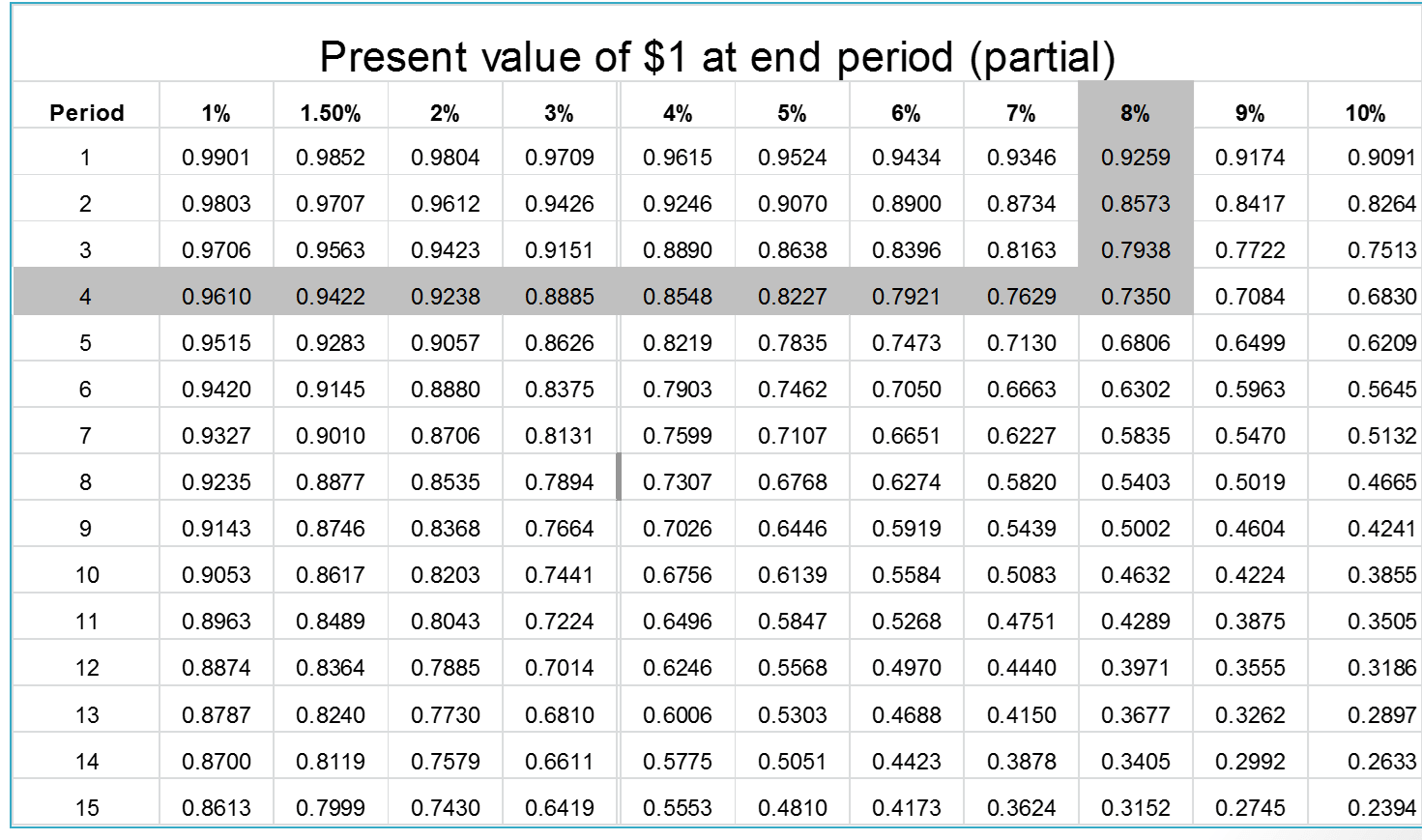Interest rate tables and table of present value
Introduction
Here are the steps in calculating the present value by table lookup:
- Find the periods: Years multiplied by number of times interest is compounded in 1 year.
- Find the rate: Annual rate divided by number of times interest is compounded in 1 year.
- Go down the Period column of the table to the number desired; look across the row to find the rate. At the intersection of the two columns is the table factor for the compound value of $1.
- Multiply the table factor by the future value. This is the present value.

Exercise 1:
Let's use a previous example to compute and compare compounded amount and present value.
Adam deposited $80 in a savings account for 4 years at an annual interest rate of 8%.
Question: What is Adam's future value (compounded amount) and presente value?
Answer:
N = 4 × 1 = 4; R = 8% / 1 = 8%; Table factor for future value (4 periods, 8%)= 1.3605;
Compounded Amount = Present Value × 1.305 = $80 × 1.3605 = $108.84
N = 4 × 1 = 4; R = 8% / 1 = 8%; Present Table factor (4 periods, 8%)= 0.7350;
Present value = Future Value × 0.7350 = $108.84 × 0.7350 = $80
Exercise 2:
Nadia needs $30,000 for college in 4 years. She can earn 6% compounded semiannualy at her bank.
How much must Nadia deposit at the beginning of the year to have $30,000 in 4 years?
Answer:
Periods (N) = 4 x 4 = 16; Rate (R) = 6% / 2 = 3%; Present Table Factor (16 periods, 3%) = 0.7284;
Present value must be: Future value × 0.7284 = $30,000 × 0.7284 = $21,852
For more details, please contact me here.
